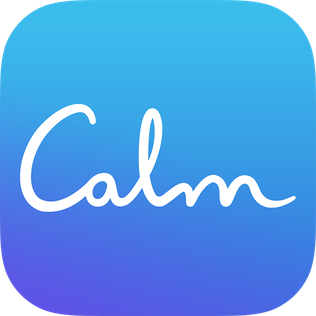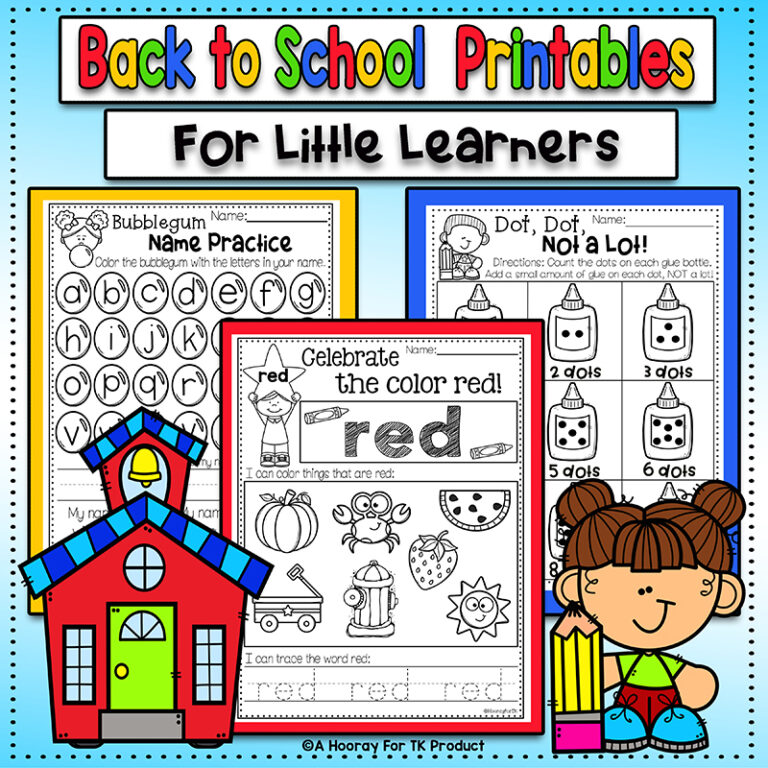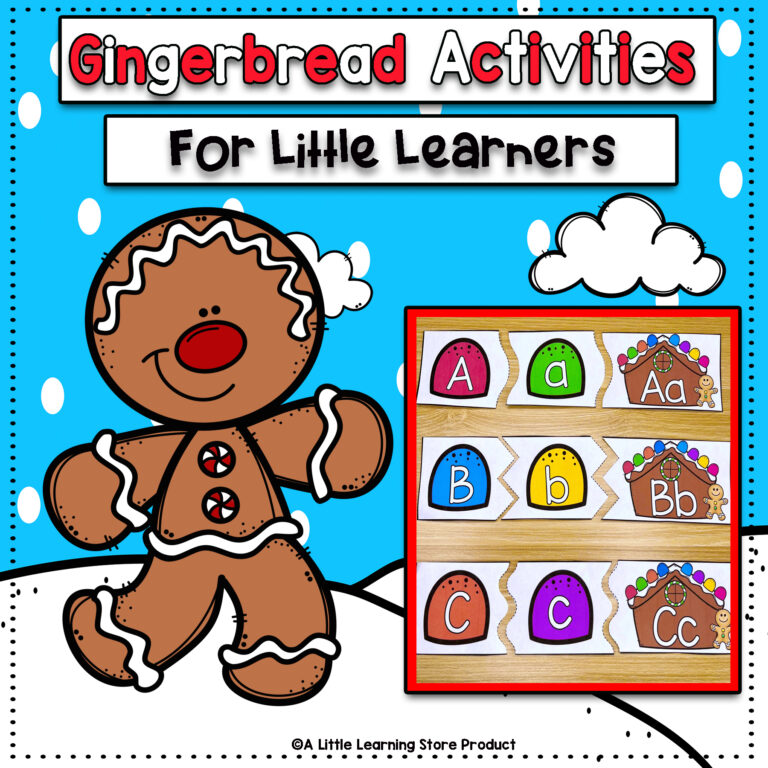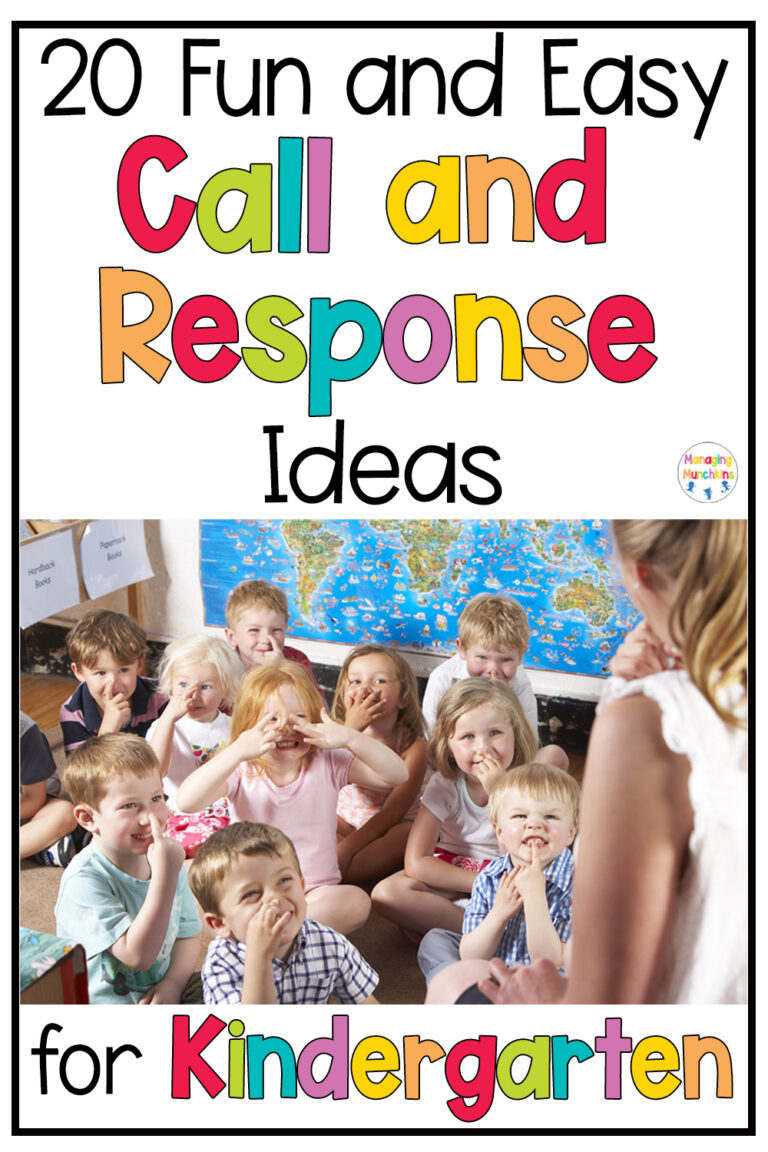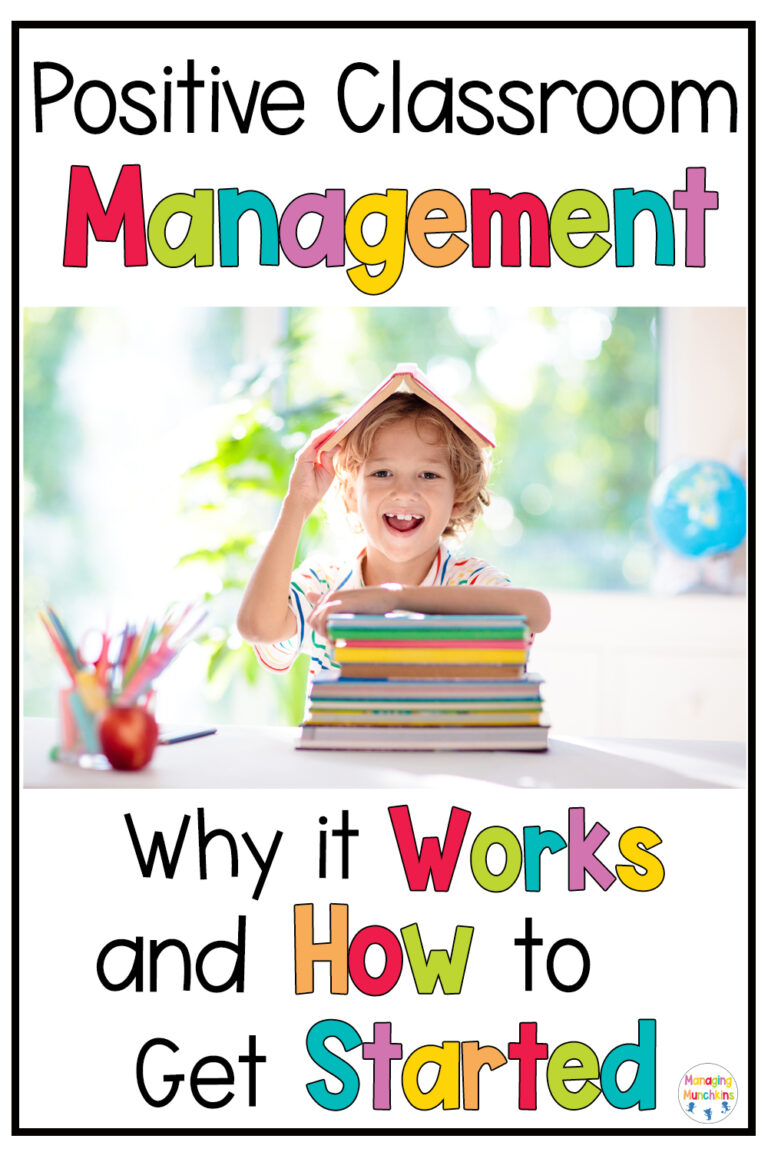Teacher Mindfulness: Why it Works, How to Do It, and More
Teaching kindergarten can be an incredibly rewarding but very demanding profession. The constant juggling of planning, prepping, assessing, and teaching, all while trying to meet your young students’ needs can leave educators feeling overwhelmed and stressed.
In the midst of all this, it’s crucial to prioritize your own well-being. That’s where mindfulness comes in.
Teacher mindfulness is a practice that involves being fully present and engaged in the moment, without judgment. It’s a powerful tool for managing stress, increasing focus, and enhancing overall well-being.
As a teacher, incorporating mindfulness into your daily routine can have a profound impact on your ability to navigate the challenges of the classroom with composure and compassion.
Why Teacher Mindfulness Matters
Before we dive into how to get started with mindfulness, let’s explore why it’s essential for educators.
- Stress Reduction: Teaching is one of the most stressful professions, and chronic stress can lead to burnout. Mindfulness can help reduce stress levels, allowing you to remain resilient in the face of challenges.
- Improved Focus: Mindfulness practices enhance your ability to concentrate, which is crucial for effective teaching and classroom management.
- Enhanced Emotional Regulation: Mindfulness helps you become more aware of your emotions and respond to them in a balanced way, reducing the likelihood of reacting impulsively in stressful situations.
- Better Connection with Students: When you are present and mindful, you can better connect with your students, understand their needs, and foster a positive learning environment.
Teacher Mindfulness: How to Get Started
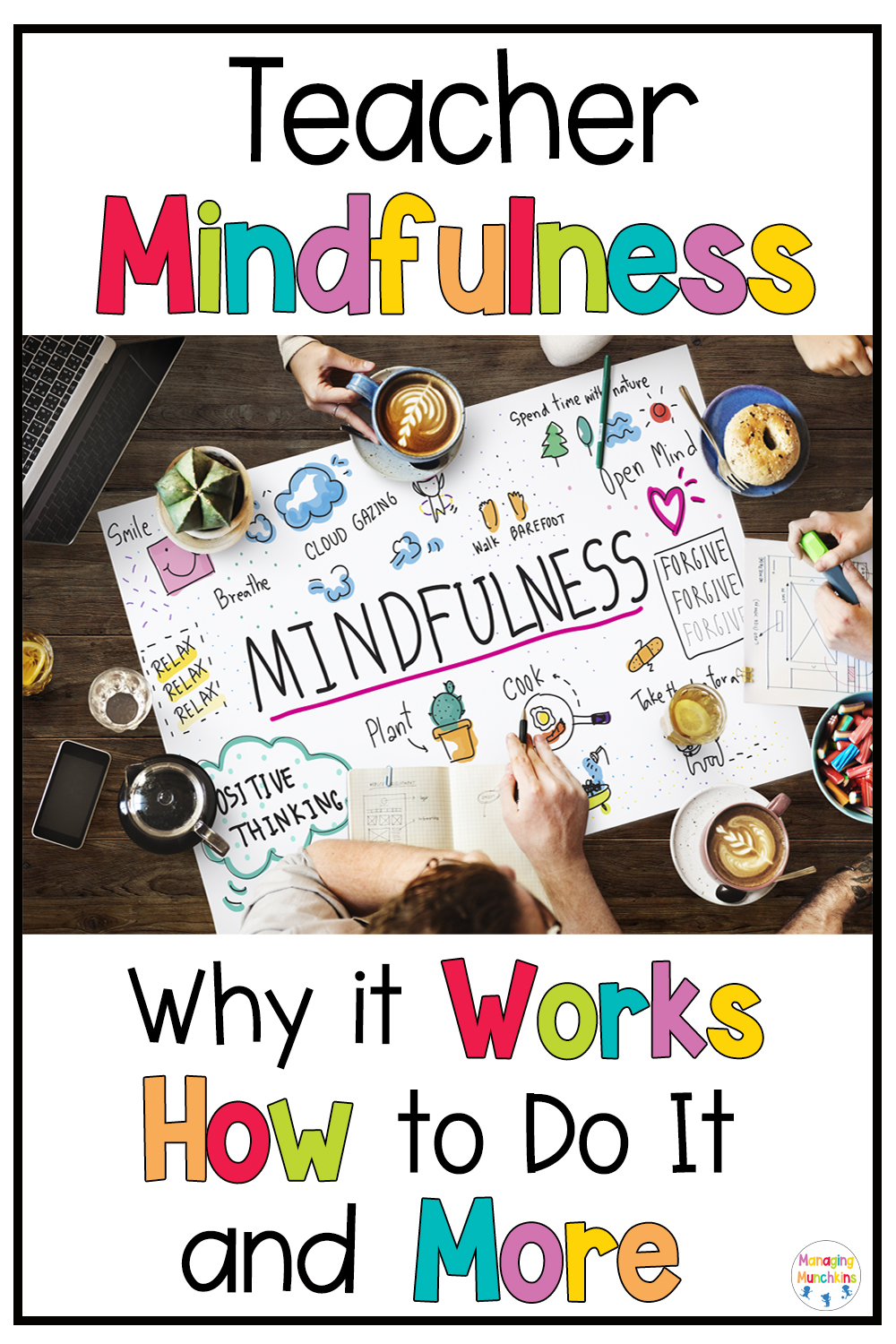
Now that you understand why mindfulness is beneficial for teachers, let’s explore 6 teacher mindfulness techniques and exercises that will begin your mindfulness journey:
1. Start with Simple Breathing Exercises:
Find a quiet space, sit comfortably, and focus on your breath. Close your eyes, inhale deeply through your nose, hold for a few seconds, and then exhale slowly through your mouth.
I like to do the 4-7-8 breathing method. This method involves breathing in for 4 seconds, holding the breath for 7 seconds, and exhaling for 8 seconds. Repeat this for 3-5 minutes.
Why it Works: The 4-7-8 breathing technique will help activate your parasympathetic response and slow down your heart rate while lowering blood pressure. Within just a few minutes, you’ll feel your mind slow down and your body relax.
2. Practice Gratitude:
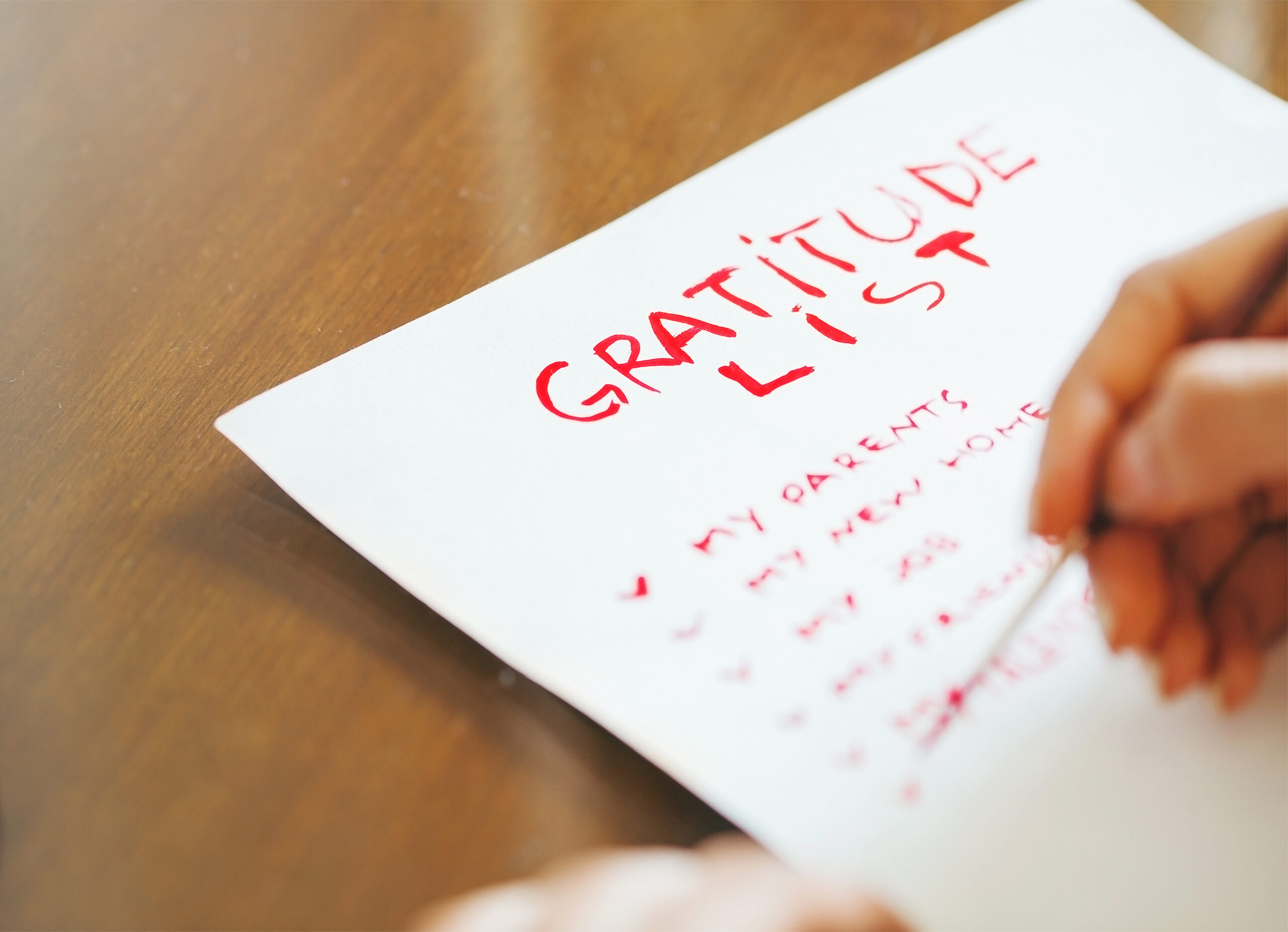
Oftentimes, we take for granted the many incredible blessings that surround us each day. I know I am definitely guilty of this!
A great way to practice gratitude is by taking a moment each day to reflect on 3 things you’re grateful for. Write these 3 things down and come up with new ones each day (no repeats!)
Why it Works😛 This is a simple exercise that can be incredibly powerful. It helps to shift your focus from stressors to positive aspects of your life and work.
3. Mindful Walking:
Instead of rushing from one task to another, take a mindful walk. Pay attention to the sensations of each step, the feeling of the ground beneath your feet, and the sights, smells, and sounds around you.
Also try to take a short 5-10 minute walk each day, preferably in nature. Start small and work your way up to 20-30 minutes.
Why it Works: Walking engages your body and encourages bilateral stimulation. This combination of physical activity, mindfulness (being aware of the present moment), and nature connection helps lower stress levels and enhances your overall well-being.
4. Use Mindful Apps:
There are many mindfulness apps available that offer guided meditations and exercises designed specifically for teachers. Some of my personal favorites are:
3.) The Tapping Solution: Best for Anxiety

Why it Works: With features like reminders and progress tracking, these apps encourage consistent practice, helping you develop essential mindfulness skills for improved mental and emotional health. Consider trying one of these to get started with practicing teacher mindfulness
5. Create Mindful Moments:
Integrate mindfulness into your daily routine. For example, take a few mindful breaths before entering the classroom or pause for a moment of mindfulness during a break.
With mindful moments, you want to engage all 5 senses. Look around and notice the items in the room around you. Observe the colors and shapes. Take note of the sounds that you hear. What smells do you notice? Try and take a sip of water and notice how refreshing and smooth it feels as you drink it. Scrunch your toes and feel your shoes beneath them (or the ground if you are barefoot). Take your hand and run it over an object nearby. How does it feel? Smooth, rough?
Why it Works: It may sound simple, but this is an incredibly powerful exercise to help you destress. When we are stressed and anxious, we are using the fight or flight part of our brains (the amygdala). When you practice mindfulness and engage in the present moment, you pull the activity from the amygdala and engage the prefrontal cortex (the logical reasoning part of the brain) which is why you begin to deescalate and destress. Pretty amazing, right?!
6. Try Yoga:

Yoga encourages a deep mind-body connection, promoting a heightened sense of self-awareness and presence in the moment (remember, being present in the moment uses your prefrontal cortex!)
Yoga is also beneficial for mindfulness as it combines physical postures with focused breathing and mental awareness. Just practicing 10 minutes a day can make a huge difference. Short on time? Try some yoga videos on YouTube!
Why it Works: Through regular yoga practice, teachers can develop the skills to manage stress, enhance concentration, and cultivate a greater sense of inner peace, all of which are integral components of mindfulness.
In a Nutshell:
Remember that mindfulness is a skill that develops over time. Just choose one of these to start out and then you can slowly add the others in. Be patient with yourself and commit to incorporating mindfulness into your daily life.
The more you practice, the more you’ll discover its transformative power in helping you become a more resilient, focused, and compassionate teacher. Your well-being and the well-being of your students will benefit greatly from your mindfulness journey.
Looking for more ways to practice teacher mindfulness and self-care?
Check out my blog post “Best Tips and Tricks for Teacher Self-Care: Summer Editition“

